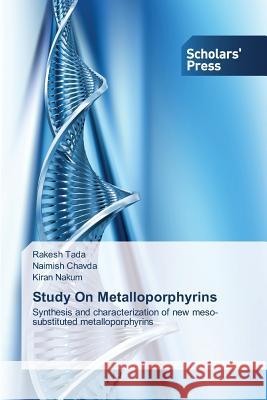Study On Metalloporphyrins » książka
Study On Metalloporphyrins
ISBN-13: 9783639716504 / Angielski / Miękka / 2014 / 60 str.
The work presented in the Book entitled "Study on Metalloporphyrins" can be summarized in analytical and physical data; spectral data are compatible with the suggested structures. The complexes are colored, stable in air and insoluble in H2O, ethanol and non-polar solvents such as benzene. However, they dissolve in polar solvents such as DMF and DMSO. IR spectra of the complexes were recorded to confirm their structures. The assignments of the characteristic vibrational frequencies of the complexes were made by comparison with the vibrational frequencies of the free ligand. The ligand behaved as neutral tetradentate ligand coordinating through the four imine nitrogens. In all Complexes the signals of the imine groups were merged together and shifted to lower wave number accompanied by a decrease in their intensities, indicating they are involved in complex formation. The UV-Vis absorption spectrum of the complexes shows single d-d transition band in the 554-545 nm range as expected for a square planar copper(II) environment with similar N4 donor tetradentate Schiff base. 1H NMR studies of porphyrin reveal the aromatic nature of the porphyrin macrocycle.
The work presented in the Book entitled "Study on Metalloporphyrins" can be summarized in analytical and physical data; spectral data are compatible with the suggested structures. The complexes are colored, stable in air and insoluble in H2O, ethanol and non-polar solvents such as benzene. However, they dissolve in polar solvents such as DMF and DMSO. IR spectra of the complexes were recorded to confirm their structures. The assignments of the characteristic vibrational frequencies of the complexes were made by comparison with the vibrational frequencies of the free ligand. The ligand behaved as neutral tetradentate ligand coordinating through the four imine nitrogens. In all Complexes the signals of the imine groups were merged together and shifted to lower wave number accompanied by a decrease in their intensities, indicating they are involved in complex formation. The UV-Vis absorption spectrum of the complexes shows single d-d transition band in the 554-545 nm range as expected for a square planar copper(II) environment with similar N4 donor tetradentate Schiff base. 1H NMR studies of porphyrin reveal the aromatic nature of the porphyrin macrocycle.











